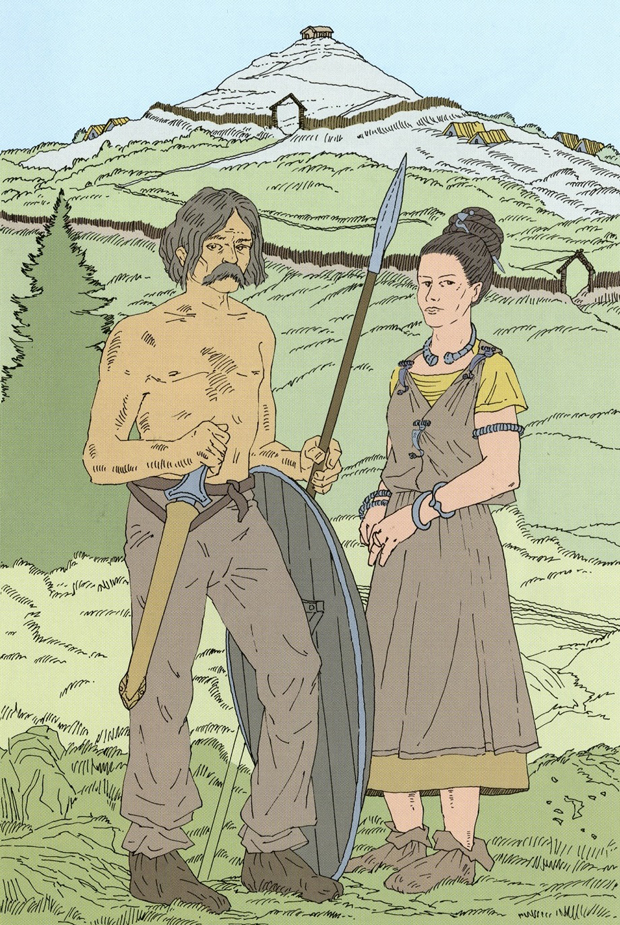The Pre-Roman Iron Age: 700 – 30 years BC

“Old Iron”? As if!
Already known of in the Mediterranean region since the Bronze Age, the oldest iron artefacts in Thuringia date to the 7th/6th centuries BC – for example, the remains of a knife found among cremated remains in a burial mound in southern Thuringia.
The utilisation of iron didn’t really gain momentum in Thuringia until the 2nd or 1st century BC. In contrast to bronze or copper, iron ore was easily obtainable and sources common. As such, unlike other metals, iron wasn’t a material confined to the upper classes.
A major advantage of iron was its hardness. This property made it ideally suited for the production of weapons, tools, and harvest implements.
Archaeologists divide the Iron Age into two epochs based on two important sites: the Hallstatt, followed by the La Tène. The Hallstatt saw iron become established in Thuringia. The La Tène is distinguished by its distinctively artistic decorative style. The La Tène was an important factor in the flourishing of the Celts. In the ALT you will be amazed by the Celtic torcs and fibulae!
The Celts were also the first to use iron in Thuringia and drove its spread. Their artefacts are present in burials in the Orla region in southern Thuringia, among others at the largest archaeological site in Thuringia, the Steinsburg hill-fort near Roemhild. Many craftsmen lived and worked in this settlement. You can see models of the Steinsburg in the ALT.
Under the influence of classical culture from the Mediterranean region the Celts made many important technological advancements. Examples include the introduction of the rotating potter’s wheel and of rotary mills (or querns). They possessed mastery of traditional metalworking techniques, like blacksmithing and fine-forging. They brought the first glass jewellery and the first coins to the region.
The pre-Roman Iron Age is also the period in which, for the first time in Thuringia, prehistoric peoples – Germanic as well as Celtic – are historically documented. They were part of the Jastorf Culture, archaeological evidence of which has been found in the area around the Saale and Ilm Rivers. They cremated their dead and the burial urns were interred accompanied by bronze and iron items typical of the costumes of this material culture. Among these were weapons and jewellery stylistically similar to those of the Celts. This reflects the fact that, between the 4th and 1st centuries BC, Thuringia was a zone of contact between the Celtic south and the Germanic north. Stimulated by the Celtic civilisation and characterised by hill-fort settlements (or oppida), trade and crafts flourished in Thuringia up until the middle of the 1st century BC.

